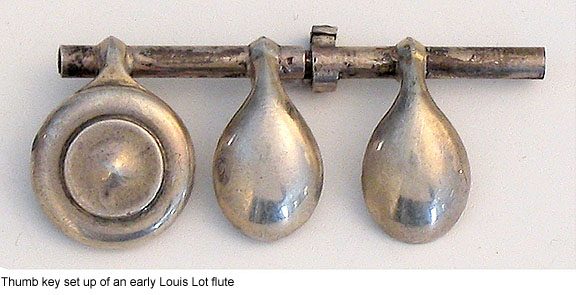
Repair, Restoration, Preservation
In making a decision on an irreversible repair on a historical Boehm flute, I always ask the question of how much of the original I should keep. A restoration project will inevitably involve altering the original, from replacing the pads, heating up the tube or merely cleaning the flute. The aim of preservation is to minimize deterioration; no effort is made to change the current state of the flute, playable or not. It is impossible to fully explore the playing characteristics of an old flute without putting it in optimal condition. Somewhere, there is a compromise between restoring and preserving a flute. The person who owns the flute draws this line.
A museum is a great place to see old flutes; some even allow visitors to play certain instruments in their collection. However, these instruments may not be in good playing condition and a false idea may form in the player’s mind that old flutes don’t play well. One must understand that the flute collection in a museum serves a totally different function than that of a music store. That’s why it’s such a privilege to play music on a well-regulated Louis Lot or a Boehm and Mendler flute. Most private collectors and performers seek out these flutes and restore them, or even highly modify them like many Stradivarius violins, to suit their own purposes. A flute is much like a clock, a mechanical device that exists as an object of beauty as well as performs a function. It is the ability to keep accurate time that makes a clock a chronometer. A flute becomes a musical instrument when music is made on it.
As a flute player and flutemaker, my primary interest in Boehm flutes is to play them and study their construction. I am amazed at the complexity of flute acoustics – everything on a flute affects everything else – there are the tube material properties, the pads and pad washers, the headjoint and embouchure, tenon fitting, internal geometry, etc. The large and small variables are not easy to manage. The sum of these variables determines the unique quality of a flute. It shows that flutes made by a certain company during a particular period bear a family resemblance.
More to come…
For more information please e-mail david at sideblown dot com